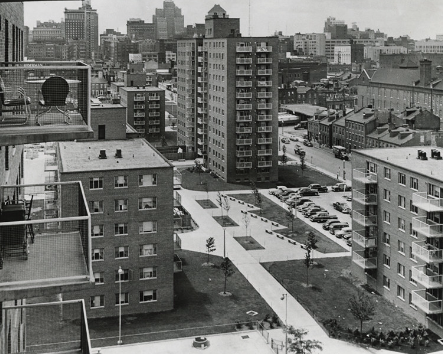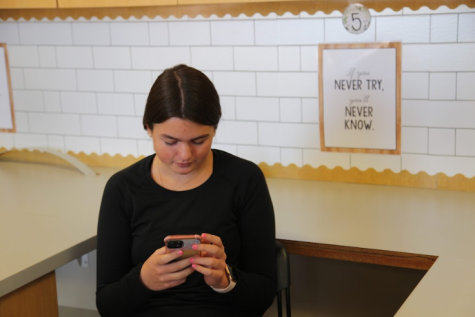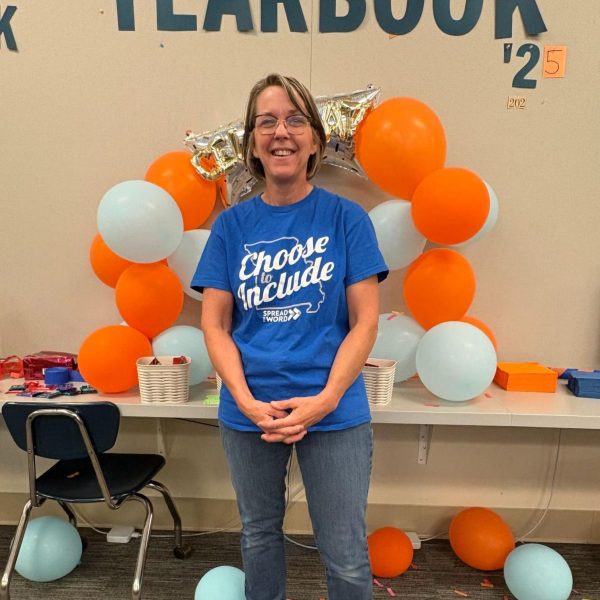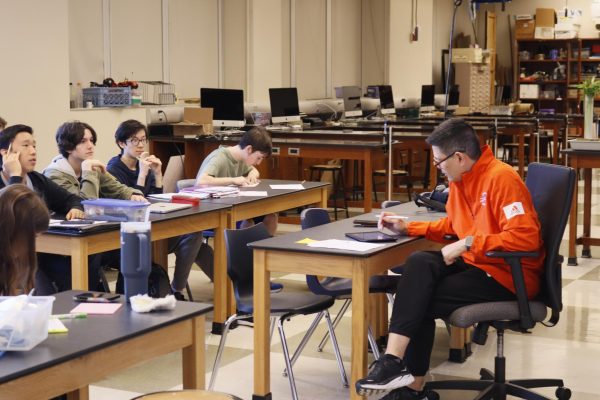75 Years Post Shelly vs. Kraemer
It’s been 3/4 of a century since Shelly vs. Kraemer. How far have we come?

Puitt Igoe, a failed housing development that occured as a result of the ruling of Shelly vs. Kraemer.
“I feel like black lives are being replaced by black lives matter signs,” said CHS Senior, Zoey Hall.
Hall is student representative for Diversity Equity and Inclusion at Clayton. She remarked on how gentrification in St. Louis has progressed to where society is now. Racial equity in housing did see mass progress on the legal front in 1948. 75 years ago, the Supreme Court case of Shelley v. Kraemer was won by the Shelley family. In 1945, the Shelley family moved into a neighborhood in St. Louis, which 34 years prior, had enacted a racially restrictive covenant designed to prevent Black Americans from residing in the area. When brought to the Supreme Court, the ruling held that in real property deeds, restrictive covenants which prohibit the sale of property to non-Caucasians, violate the equal protection provision of the Fourteenth Amendment.
St. Louis has had a long and hefty history of racially charged restrictions. Especially regarding the byproduct of this being gentrification of black families. After the SCOTUS ruling in 1948 in favor of the Shelley family, injustices still existed internationally, specifically in St. Louis. Unfortunately many of these restrictions were written into St. Louis’s social fabric, proving hard to move forth from the days of harsh racist initiatives written into law.
Hall noted how progress towards racial equality has advanced since this ruling. She said, “It’s taken us 75 years for us to get here, so I’m not saying that we can’t get there when it’s a century, but I definitely don’t think we’ll see a big drastic change.”
Where are we now?
Today, progress has been eminent from the time of the late 1940’s on the front of racial equality. There are more integrated schools, programs being infiltrated such as the Desegregation program, there is less housing discrimination, and more black families are moving up in generational wealth.
However, there are still copious instances of racial injustices and bigotry written into the system of St. Louis.
Dr. Cameron Poole, Chief Equity Director of Clayton said that, “Proven numbers show that some St. Louis areas are just as segregated now as they were about 50 years ago. I would almost argue that some areas aren’t any more diverse.”
Many African-American families in STL have been bought out of their homes for the sake of realtor expansion. Poole noted how “oftentimes when you’re seeing an expansion of homes and they’re buying people out, it’s usually in predominantly black neighborhoods.”
In many cities, not just STL, value is seen in certain areas where land is bought at a cheap price and expansion is increased in order to then price out people who live in that community.
With St. Louis’s extensive history of redlining, the city has become a product of segregation. Hall said how, “Especially with the Delmar divide, the North side has predominantly black families, then on the South side, it’s predominantly white.”
There are many counties in St. Louis where integration and segregation have existed in the same municipality. Poole said that, “You can look at parts of Kirkwood, parts of Webster Groves, parts of Creve Coeur and Chesterfield where a lot of folks get bought out and pushed out.”
Black families pushed out of their homes face additional burdens as a result of segregation written into the code of certain neighborhoods. In predominantly black communities, especially in St. Louis, food apartheid still exists, and thrives even more when black families are faced with systematic barriers put in place.
“In these communities, to get fresh fruit, and organic food it could be a ton of miles out. Especially if public transportation isn’t working or you don’t have access to a car that’s readily available. It’s sad,” said Hall. “And most of the places by these houses are either just fast food places or liquor stores where you don’t can’t really get a sufficient meal.”
Within the housing market, black families face a reality that has been prominent since the birth of the city of St. Louis.
“St. Louis has a very unique situation where racism is so ingrained into our city. Like literally into the streets,” Hall said. Especially in cities like Detroit and Baltimore versus other areas, I think it’s a blessing and a curse of the fact that we’ve had this history, but we’re also able to learn from it.”
Hall remarked on how racial biases in housing are viewed today, prominently in Clayton. For one’s experience she noted how, “I don’t think it’d be blatantly like, ‘You can’t live here,’ but more like the looks that we get from our neighbors. The looks you get from it are like, ‘Oh, you live here?’”
“In terms of racial equity, it’s not so much in your face,” she said. “It’s not like people calling you slurs or running you down the street, but it’s more of the lasting effects of past racist legislators.”
Where are we heading?
Poole and Hall, among other Clayton representatives in the Equity Commission, have been working on trying to combat the racist background in Clayton and St. Louis. The commission is working on looking into neighborhood ordinances in the district in order to rewrite and change the harmful language within these documentations; Language promoting life before Shelly v Kraemer.
On these efforts, Poole said, “[The School District of Clayton] would look into destroying, and getting rid of that language, and then kind of re-branding those just for the simple fact that they were still there, even up to this point.”
With Hall bringing in her student perspective on these issues, she talks with Poole often, discussing past acts of progress and setback, including the bussing program at Clayton that disbanded years ago, as well as the importance of education on black excellence in Clayton.
Being a part of Black Student Union, she displayed the progress we still have yet to make. Hall recalled how, “Even thinking about the panel that we had at the Black History night program, the black population used to be around 25% and now we’re at like 14%. So knowing that the numbers are decreasing, especially in elementary schools, is crucial.”
Many students in Clayton may not realize that progress is occurring in the district in the first place. Even if advancements towards racial equity in Clayton are progressing, from a student standpoint it appears as more of a lack of action from the district.
“We know that the amount of students that look like me are going down, but I’m not too sure what the district’s doing about that,” said Hall. “I’m not saying they aren’t concerned about it, but you know, I don’t see anything from it [on] my side as a student.”
Lack of knowledge regarding diversity in schools, neighborhoods and districts also plays a huge factor. Most Clayton students are not aware that Clayton used to be a black community in the 1960s, as Hall illuminates. She noted how, “Everybody knows that Clayton’s a rich, affluent, intelligent white community, but most Clayton kids don’t even know the real history.”
Schools will play a big role in change in the future. The direction, while not clear now, can be going towards a positive direction going forward as long as the work is done in order to ensure this progress.
“It really just goes back to a lot of work,” Hall noted. “They’re rewriting every legislation, every little piece, every little indoctrination of racism that’s in our country. I mean, people made sure they left their mark and it’s really up to us to try to reverse that and that’s gonna take time.”
A $50 or more donation includes a subscription to the Clayton High School Globe 2024-2025 print news magazine.
We will mail a copy of our issues to the recipients of your choice.
Your donation helps preserve the tangible experience of print journalism, ensuring that student voices reach our community and that student democracy thrives.

Pronouns: she/her
Grade: 12
Years on staff: 4
What's an interesting fact about you? I am co-president of the Speech and debate team, the Senior Class Vice President, and...










